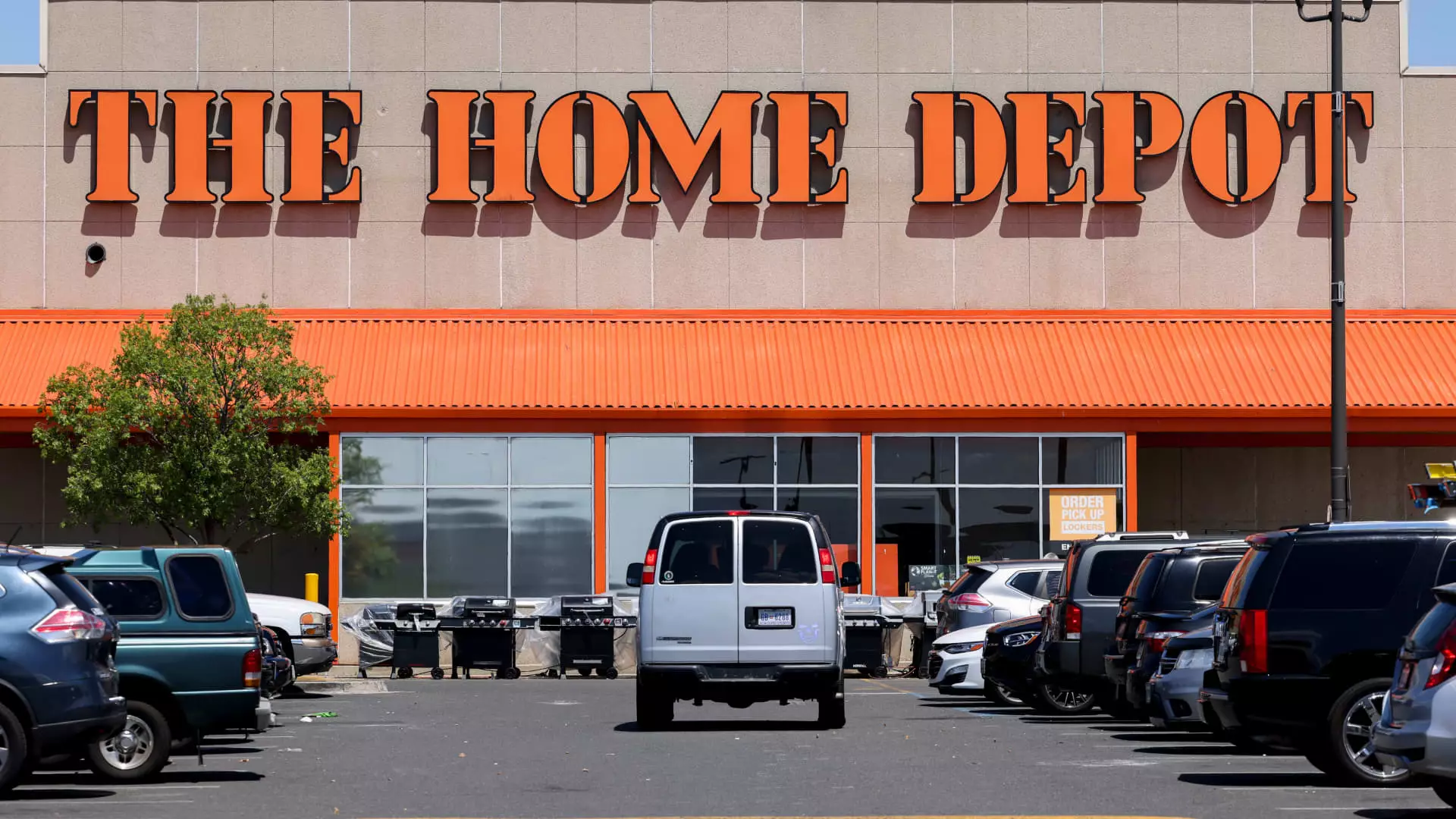Home Depot, a household name in the retail home improvement industry, faced a tumultuous 2024 that tested its resilience amidst rising interest rates and a cautious consumer base. However, as the year closed, indications of a potential recovery became apparent, setting an optimistic tone for the coming years. This article explores Home Depot’s performance in 2024, the key factors influencing its trajectory, and what investors might anticipate in 2025.
Throughout 2024, Home Depot’s journey was characterized by substantial volatility. The initial months of the year were deeply affected by elevated borrowing costs, which discouraged consumers from making significant home improvement investments. The housing market, burdened by these constraints, saw a pronounced slowdown, which in turn impacted Home Depot’s sales figures. While the company continued to function, the sluggish consumer sentiment weighed heavily on investor perceptions, leading to a conservative approach regarding stock valuation.
In March, hopes emerged with the anticipation of multiple Federal Reserve rate cuts intended to stimulate economic activity. This shift momentarily lifted Home Depot’s stock, offering a glimpse of optimism to stakeholders. However, these initial gains were short-lived as market sentiment fluctuated again in May, leaving investors apprehensive. Despite the challenges, notable events such as a significant interest rate cut from the Federal Reserve in September ignited conversations around recovery, especially as inventory turnover in the housing sector had reached historic lows.
As the year advanced, a turning point surfaced. The Federal Reserve’s decision to initiate a monetary easing cycle with a substantial 50 basis point rate cut propelled stocks like Home Depot into a temporary rally. By November 26, Home Depot’s shares hit an impressive intraday high, showcasing the potential for recovery despite later pullbacks. This fluctuation in stock price reflects broader market dynamics, where investor mood and external economic conditions significantly impact performance.
One of the critical takeaways from Home Depot’s 2024 performance is the potential for pent-up demand from consumers. With home improvement projects often being postponed due to financial constraints, there is an expectation that as the economic environment stabilizes, consumers will rush to upgrade and remodel their homes. The backdrop of rising housing turnover inherently positions Home Depot as a central player in this recovery.
Looking Ahead: The Projections for 2025
As we look towards 2025, the outlook for Home Depot appears promising. Analysts project that improved housing turnover, fueled by potentially lower mortgage rates, will drive increased consumer spending on home improvement projects. With the Federal Reserve signaling intentions for further rate cuts, consumer confidence may be bolstered, encouraging homeowners to invest in renovation materials and services.
Moreover, Home Depot’s strategic positioning within the professional contractor market gives it an edge over competitors. Their acquisition of SRS Distribution earlier in the year enhanced their service capabilities, particularly among professional customers. Such strategic decisions are crucial in solidifying Home Depot’s competitive advantage and ensuring sustained growth.
However, potential risks remain on the horizon. Market analysts caution about the impact of long-term treasury yields on mortgage rates, which could dampen recovery timelines. Higher mortgage rates typically translate to reduced housing market activity, which could impede Home Depot’s ability to maintain positive sales growth. Additionally, political factors, including potential tariff complications related to imports from Mexico, Canada, and China, could introduce unforeseen challenges. Despite these risks, Home Depot’s reliance on U.S-sourced products, which constitute a majority of its inventory, provides a strategic buffer.
For investors, Home Depot remains a compelling option, especially as market sentiment shifts toward recovery. The stock’s year-to-date performance of 12% and a forward price-to-earnings multiple of 25, above its five-year average, underlines investor optimism. Analysts suggest a buy-equivalent rating, with a price target set at $440 a share, indicative of confidence in the company’s recovery strategy.
While 2024 presented formidable challenges for Home Depot, the signs of recovery and strategic positioning for 2025 showcase its resilience. As the economic landscape evolves, Home Depot is well-placed to capitalize on consumer demand, providing ample opportunities for growth. The company’s ability to navigate uncertainties in the housing market and capitalizing on professional contracting segments could redefine its trajectory in the next year, making it a focal point for investors looking for opportunities in the home improvement sector.

